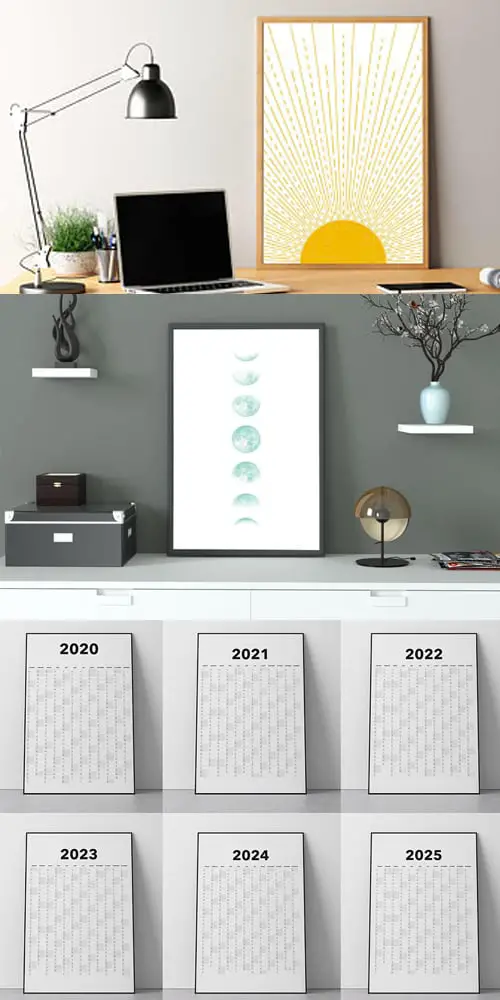by Linda | Nov 23, 2011 | my creative journal
We all need time to recharge our bodies and minds. It’s not always about tasks lists and check marks. We all know this!
The problem is when we take breaks that aren’t really breaks. When I think I’m resting, I’m not really getting recharged at all. I’m still going…
Surfing on the internet is exhausting. It’s not a recharge type of activity. Watching a movie doesn’t let my mind rest…I’m usually having conversations inside my head, analyzing this and that.
Recharge activities are supposed to give you energy after the fact. If you still want to veg-out or go to sleep afterwards…I don’t think the original purpose was served.
So I’m thinking more about my breaktimes. If my recharge activities are working. Do I feel energized afterwards…or drained even more?
I know that I need to find better ways to truly recharge.
by Linda | Nov 7, 2011 | my creative journal
I just saw a video presentation on Designing An MBA and started crunching some numbers for my own creative biz. I know that we have to figure out these details…but I think the fear of not achieving the goal, deters me from facing reality. I thought it would be nice to open it up and see if I’m just crazy. Please indulge me as I think out loud.
The simplest big picture calculation starts with how much profit you want. I decided to go through this exercise with a hypothetical example. Take the super low end of how much a graphic designer makes – about $36,000 yearly salary according to salary.com. In running your own business, in order to get paid that amount you have to rack in 3 times that amount in total sales. Again, bear with me here for the sake of this example because I know we all try to save on expenses and such. For that salary, it means that you want to shoot for $108,000 in total sales.
At this point, you might already be saying…oh the madness, how can that ever be possible!? Depending if you have a service business or product-based business, the costs of materials and profit margins might differ greatly. Fine, I will indulge myself by lowering the bar. Let’s say a total of $50,000 in sales is the goal for the year. If your average product sells for $20, you need to make 2500 sales a year. That rounds to about 10 products per work day, not even factoring in vacations you might want to take. Not only do you have to be able to create 10 of those products a day…you need to sell 10 a day. For a service provider like a graphic designer, $20/hour would mean working nearly 10 billable hours a day. Yikes! Obviously, there are certain scenarios that just won’t work out – simply look at the numbers.
And let me remind you that I lowered the bar in this example. I’m thinking about a whole lot of crafters and artists out there, who probably have products that are even lower than $20 a sale. How can this possibility work out, right? It’s no surprise that lots of folks are only scraping by.
How do you feel about this?
Have you crunched the numbers and figured out a plan that works for your business? What works for you and your services/products?
by Linda | Nov 2, 2011 | my creative journal
Whenever you hear about organization or decluttering, you think of closets, desks and hidden boxes around your house. But have you considered you digital clutter? Oh yes, those old hard drives, mysteriously named folders within folders and random files are sitting in digital cyberspace dust!

So why should you clear clutter, including digital clutter? I must admit that any attempt at reorganization presents a huge challenge – such a daunting task – especially today when we all have so many things to account for. The best advice I can give on that front is to take it one little bit at a time. Folder today, another folder tomorrow. One drawer today, another tomorrow. Slowly but surely is the way to go.
So although digital files don’t take up much physical space, the clutter weighs on your mind. The more “things” there are in your life, the more you are emotionally pulled in different directions. Cleaning and throwing out trash makes you feel good – the rush of getting rid of unnecessary things and clearing up free space. The funny thing is, you can’t miss these things that you probably never even knew were there.
With cleared space and peace of mind, you’ll finally have room to take on some new and exciting projects. Whether it be literally in your harddrives or metaphorically in your mind. With a clean slate, you can concentrate on new things.
I should note that digital clutter applies to digital accounts as well, not just files on your computer. Those dead accounts you signed up for – who knows when – just go and delete them!
Remember the feeling of getting your brand new computer? The blank slate, pristine, clean, sleek – it just makes you so energized to dive right in. Why not revamp and declutter to get that feeling again? Not only that, getting rid of excess usually means you’ll be getting more organized along the way. You will know what you have and where it is.
I also know that your backups will be faster after cleaning up. No need to backup 25 versions of the same thing. You digital life will be a bit more efficient…simply because there are no duplicates to deal with – generally less things.
So take a look at your digital life and see if you can clear up some clutter before the holidays. You might actually find some useful things along the way…
by Linda | Oct 26, 2011 | my creative journal
I just had a thought… about how an unknown designer or creative professional usually has to work really long, hard hours to make just a little money. Then there are the big names that don’t necessarily need to work as long or as hard, to make much more money. I realize there are many legitimate reasons to account for the difference, such as skill, experience, and quality. Of course, there are also many cases where the end product or service is not much different. I suppose one is the name brand, the other is an unknown little guy we are afraid to trust.

My thoughts drifted to state of mind. Those who are successful obviously believe in their own worth. They price accordingly and put their work out there with confidence. I believe that energy transmits. So part of the issue for beginners, is perhaps simply confidence and believing in oneself. One of things I’ve heard before, from formally trained fine artists…is that they definitely got confidence and “approval” from going to art school. Everyone believed in art as a profession and gained a sense of overall confidence from their years of education.
So maybe the first step to success, is shifting your state of mind and re-evaluating your feelings about your own work. Are YOU acknowledging your own worth? This could be in your business in terms of setting up your pricing and present yourself…but it also is an emotional battle. Self-confidence. You have to believe that you are totally awesome. Otherwise, how can you expect others to think so?
by Linda | Oct 19, 2011 | my creative journal
When it comes your creative business, there’s no doubt that countless hours are spent, pouring your heart and soul into the everyday tasks that keep it going. You spend so much energy putting your ideas into action, researching, marketing – following your creative path. It’s a fabulous thing, because it means you enjoy what you do and obviously have a commitment to your passion. Unfortunately, having fun, exploring and experimenting can often lead you astray. What were you doing all this time?! You can’t believe that hours, days, and weeks have passed.

Oftentimes we keep ourselves really busy and don’t understand why we seem to be so far off from our goals despite the effort. Although staring out at the window, watching the leaves fall might seem like a huge waste of time – I totally love admiring nature and find that my walks give me lots of inspiration for my illustration projects.
I’ve realized that for many creatives, we not only forget to track our time, but also to evaluate if time spent was worth it. Have you ever documented an entire day or week in detail? Literally keep a log, so that you can see exactly how much time you really spend on specific tasks.
When you have your time log, you can then go into the important step of evaluating if time spent was of value or not. What did you get out of spending those 3 hours reading those marketing blogs? Did you get any replies from that campaign you spent 8 hours perfecting to the last pixel and word? Is that product you sell actually profitable at the end of the day?
This doesn’t have to be an in-depth analysis with statistics, percentages or numbers flying around a spreadsheet. It’s simply an exercise in being more aware of your time and how you spend it. Only then can you make more informed decisions about how much time to spend on certain tasks…or if you should stop something altogether.
Something to think about and try this week – keep a time log. Review it and honestly evaluate your time spent. We can’t work 24/7, but it’s important to know what is worthy of your time. Keep things that work, shake up the rest, so you can figure out what works for you. Let me know what you think 😛 I’m currently tackling the same issues myself!







